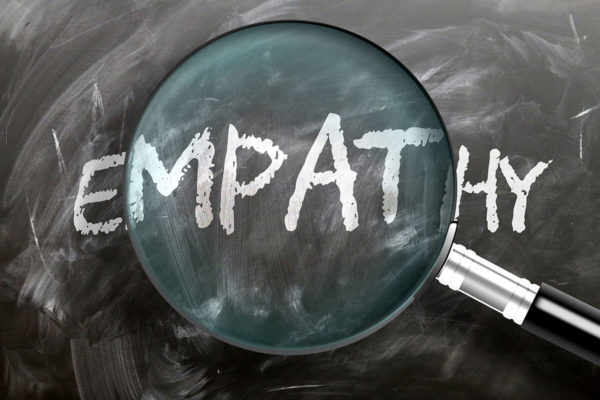The work of a Fundraiser involves empathy for others.
Empathy for your beneficiaries or cause so you can tell their story.
Empathy for your organization and its programs so you can share about them.
Most nonprofits are full of empathy… but they often miss empathy in three key places…
Empathy for Donors
Practical empathy in fundraising allows you to give a gift to donors by ‘crossing the gap’ to their level of understanding.
To understand what it’s like to be in a donor’s chair. To know what she knows. To know what she doesn’t know. And speak to her in language she understands, at a level of knowledge that makes sense to her.
That’s empathy for donors. (Which is helpful, because fundraising is for donors, not for internal stakeholders.)
But the problem with fundraising that’s empathetic to donors is that internal stakeholders don’t prefer it.
Empathy for Internal Stakeholders from Fundraisers
Another necessary practical empathy is from Fundraisers towards internal stakeholders who don’t understand as much about fundraising as Fundraisers do.
Because when you create fundraising that’s empathetic to donors, it’s often not liked by internal audiences.
For instance, program staff, board members and executive leadership often don’t understand that:
- While internal conversations are (and should be) full of industry jargon, fundraising communications should avoid jargon because most of your donors don’t know what it means. But internal stakeholders prefer jargon because its accuracy is helpful to them.
- Direct response fundraising is different than interpersonal communication. While a 1-to-1 conversation might wander around to establish relationship and common ground, a direct response e-appeal needs to get to the point immediately. But internal stakeholders aren’t usually familiar with direct response best-practices and – reasonably – would never use them themselves.
- While a grant application might detail the finer points of your organization’s programs and approach, the average reader of an appeal letter isn’t interested in those details. But internal stakeholders know those details make your organization effective! To not include them in an appeal feels wrong.
But internal stakeholders weren’t trained in direct response or any other types of fundraising. Empathy is needed to understand the concerns of internal stakeholders, to speak directly to their concerns, to help them understand what you’re doing with a generous spirit and solid explanation. Share your knowledge.
Empathy From Internal Stakeholders Towards Donors
The final necessary practical empathy is from internal stakeholders towards donors.
In my experience, the best approach is for Fundraisers to help Board and Staff through the same transformation you went through when you learned to cross the gap.
Share with Board and Staff that the same empathy they use to understand your beneficiaries can (and should) be used to understand your donors. For example, your organization is effective because it understands the problem you’re working on, meets it where it is today, and creates small, practical steps to make things better.
Great fundraising uses the same approach: understanding the donors, meeting them where they are today, and creating small, practical next steps donors can take to make things better.
Embracing the three empathies is often what unlocks an organization’s fundraising potential.
Which helps an organization help its beneficiaries even more.
Steven Screen is Co-Founder of The Better Fundraising Company and lead author of its blog. With over 30 years' fundraising experience, he gets energized by helping organizations understand how they can raise more money. He’s a second-generation fundraiser, a past winner of the Direct Mail Package of the Year, and data-driven.









One comment on “The Three Practical Empathies”